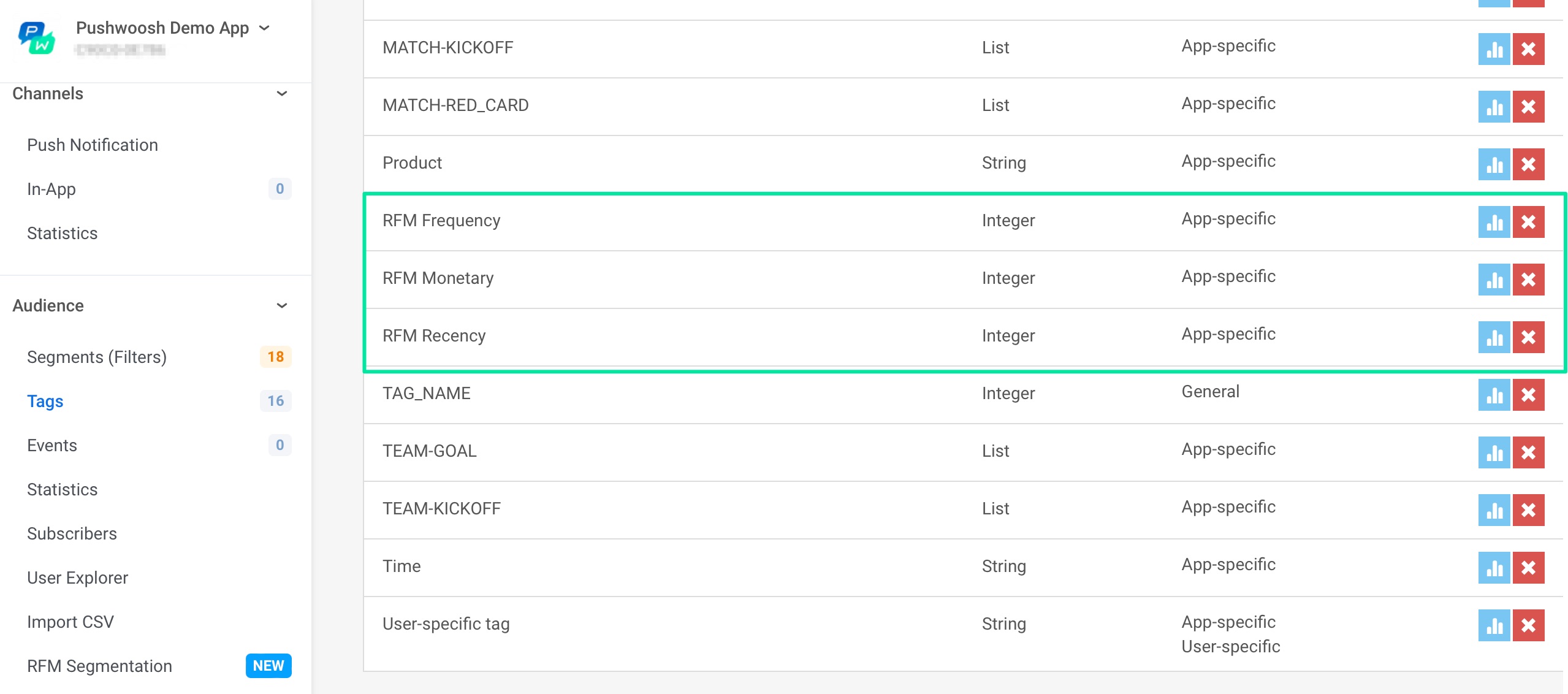RFM segmentation
With RFM (Recency, Frequency, Monetary) Segmentation, you can segment your users based on their engagement level and target these segments with the most tailored communications.
RFM segmentation ranks your users from the most loyal ones to those who are churning and builds a segment for each category of users in your Pushwoosh account. The segmentation is based on two metrics:
- Recency – how recently users performed a specific event;
- Frequency – how frequently they performed that event.
In addition, Average Monetary Values (AVM) are calculated for each segment to consider when tailoring your communication strategies. The AVM is the average spend for each user in the segment, being that money, time, or any other countable metric.
How this works
Anchor link toGo to the RFM Segmentation section of your Control Panel and select the Purchase Event and the Monetary Attribute (optionally). Click Calculate.
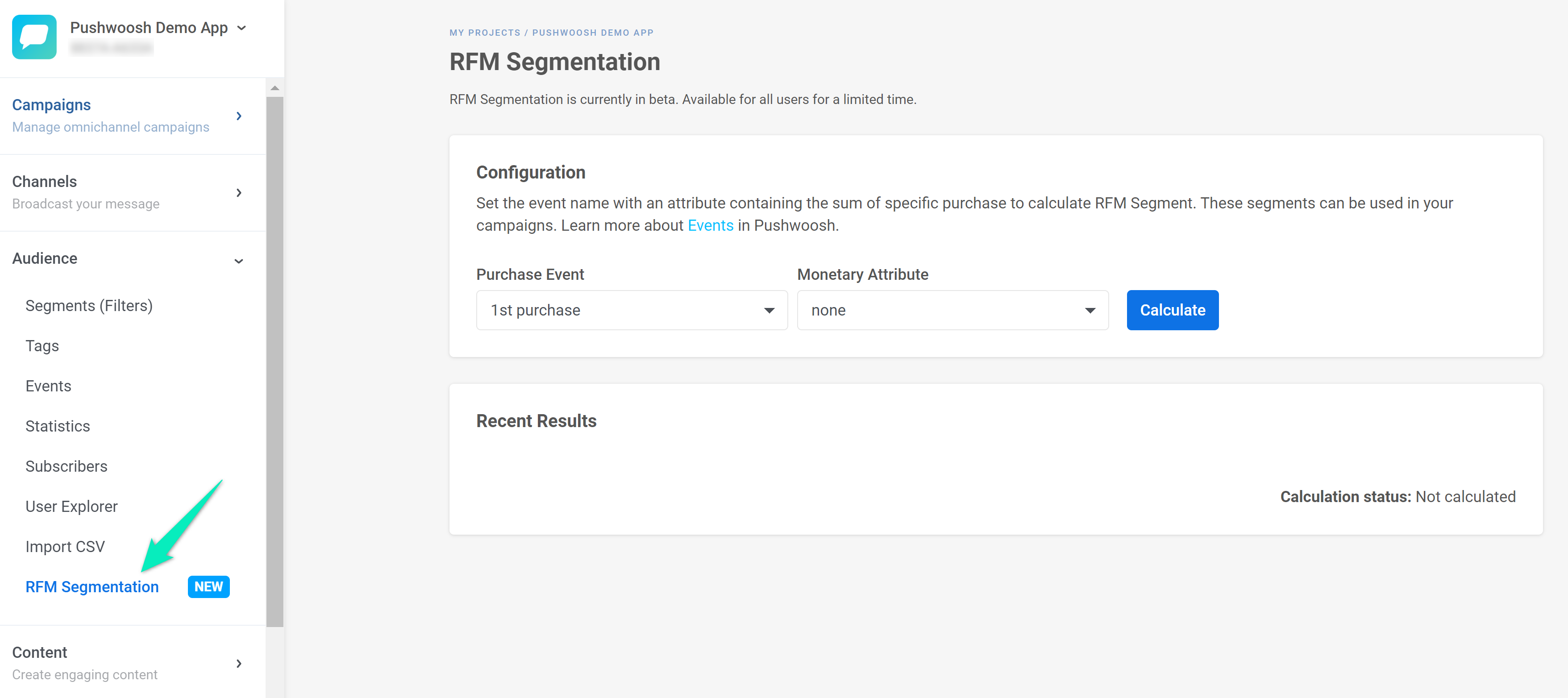
When you specify an event, we determine how recently and frequently each user of your app triggered that event and score them from 1 to 5 where 5 are the most recent and frequent event performers.
Thus, all users are divided into 10 segments:
- Champions – The most active users with the highest recency and frequency scores.
- Loyal customers – Users with the highest frequency of event performance with strong recency scores.
- Potential loyalists – Users who have performed the selected event very recently and have the potential to become loyalists or champions.
- New customers – Most recent users with low frequency scores. Strong candidates to encourage repeat use.
- Promising – Users with high recency scores and the potential to become high frequency users.
- Needing attention – Users with above average frequency and recency scores.
- About to sleep – Users with below average recency and frequency scores. May slip away if not engaged with.
- At risk – Users who have above average frequency but low recency scores. Strong candidates to re-engage.
- Cannot lose them – These users were active at one point in your app but haven’t performed the event recently. Strong candidates to re-engage.
- Hibernating – Users with the lowest recency and frequency scores. May be lost.
RFM Segments
Anchor link toThe RFM segments, once calculated, are displayed in a grid of 10 sections with the number of users in each segment, a percentage of the whole userbase this segment has, and the Average Monetary value of this segment (if you specified the monetary attribute before calculating the segment). On second and further calculations, the rate of growth is shown next to the percentage of the whole audience.
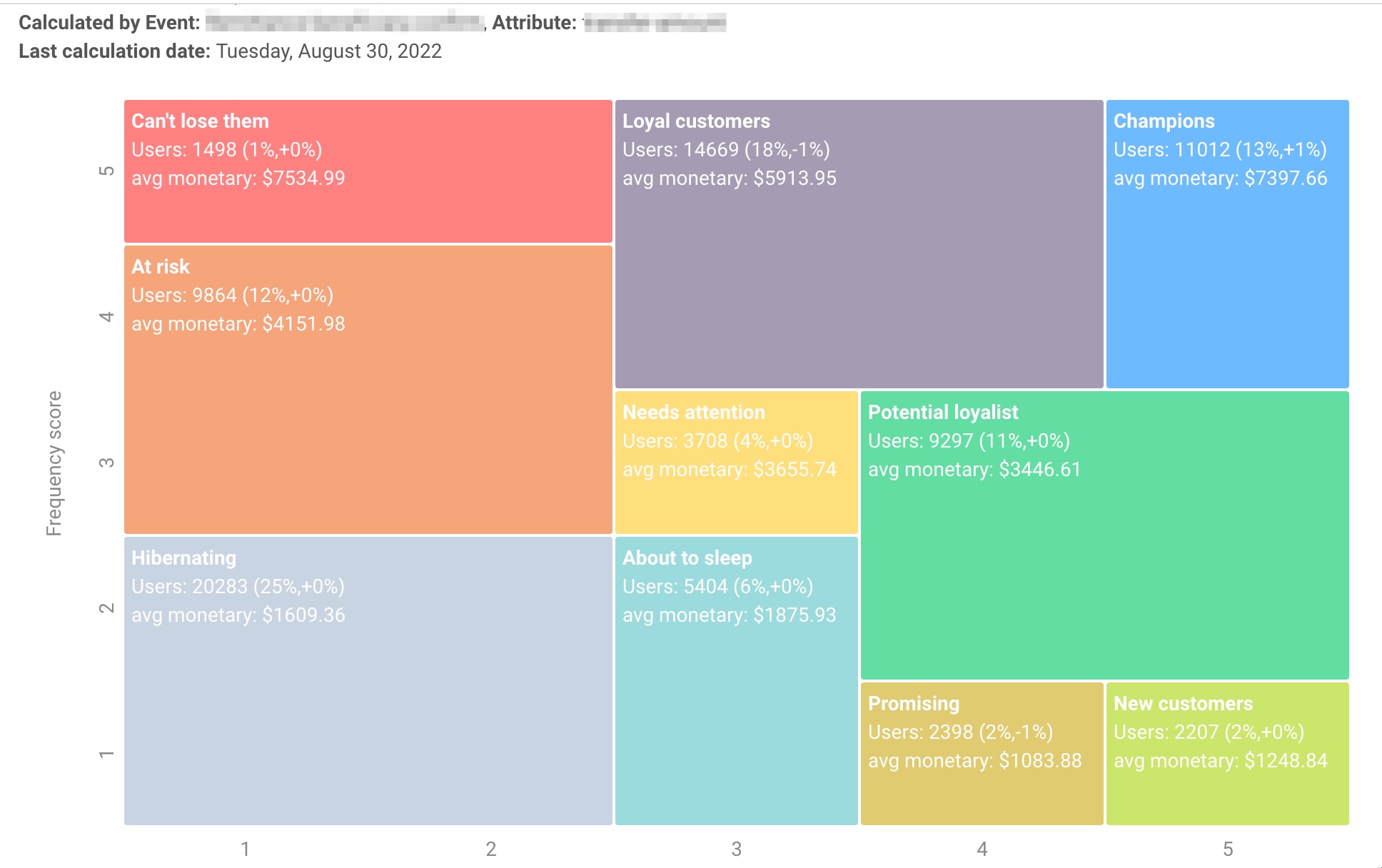
Just click on the segment in the RFM grid to start composing a push message to this audience, or select that segment wherever you start messaging.
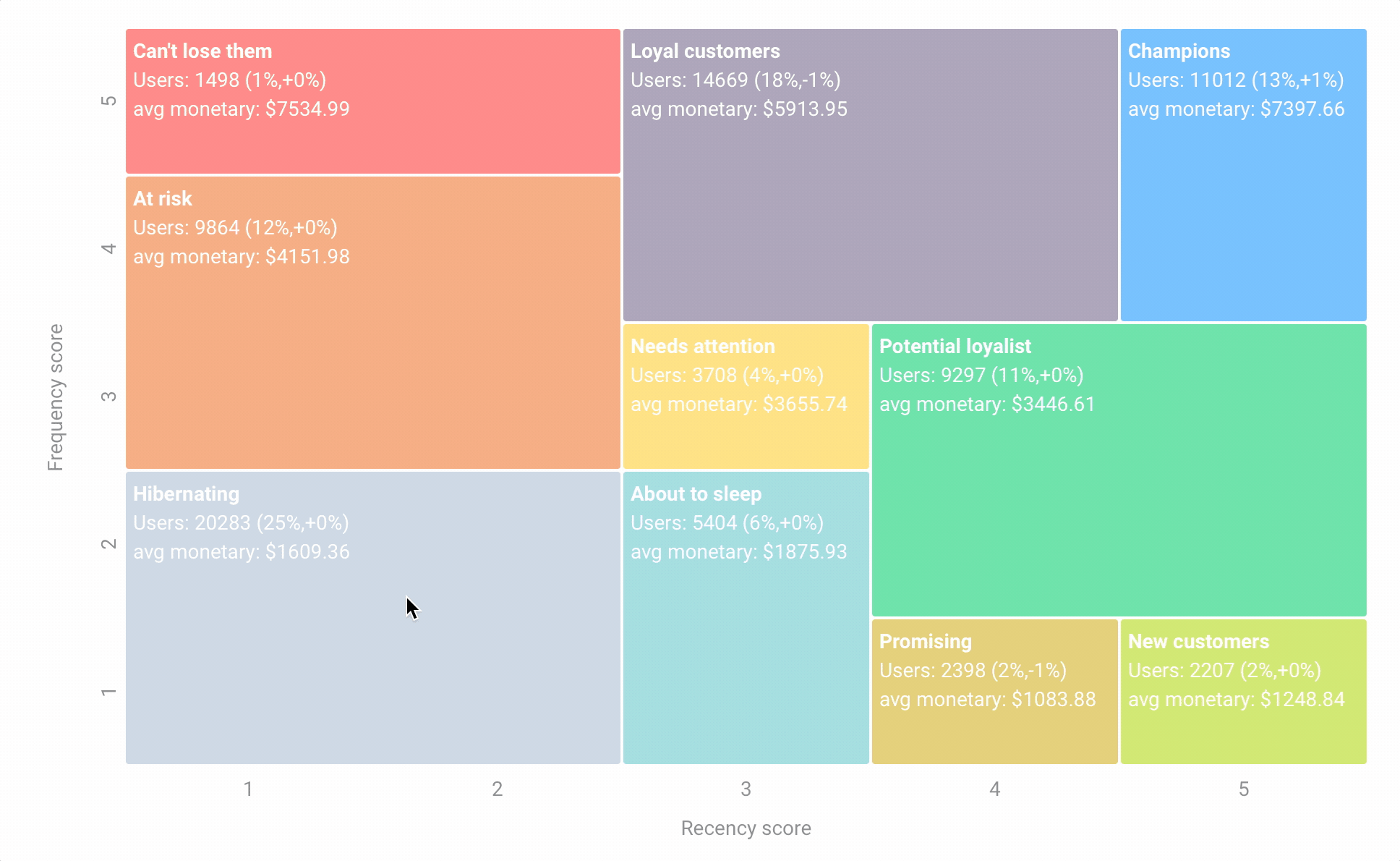
You do not need to manually add RFM segments to the Segments list. Once created, they are automatically available there and can be applied wherever segment-based targeting is used, such as Audience-based entry in Customer Journey.
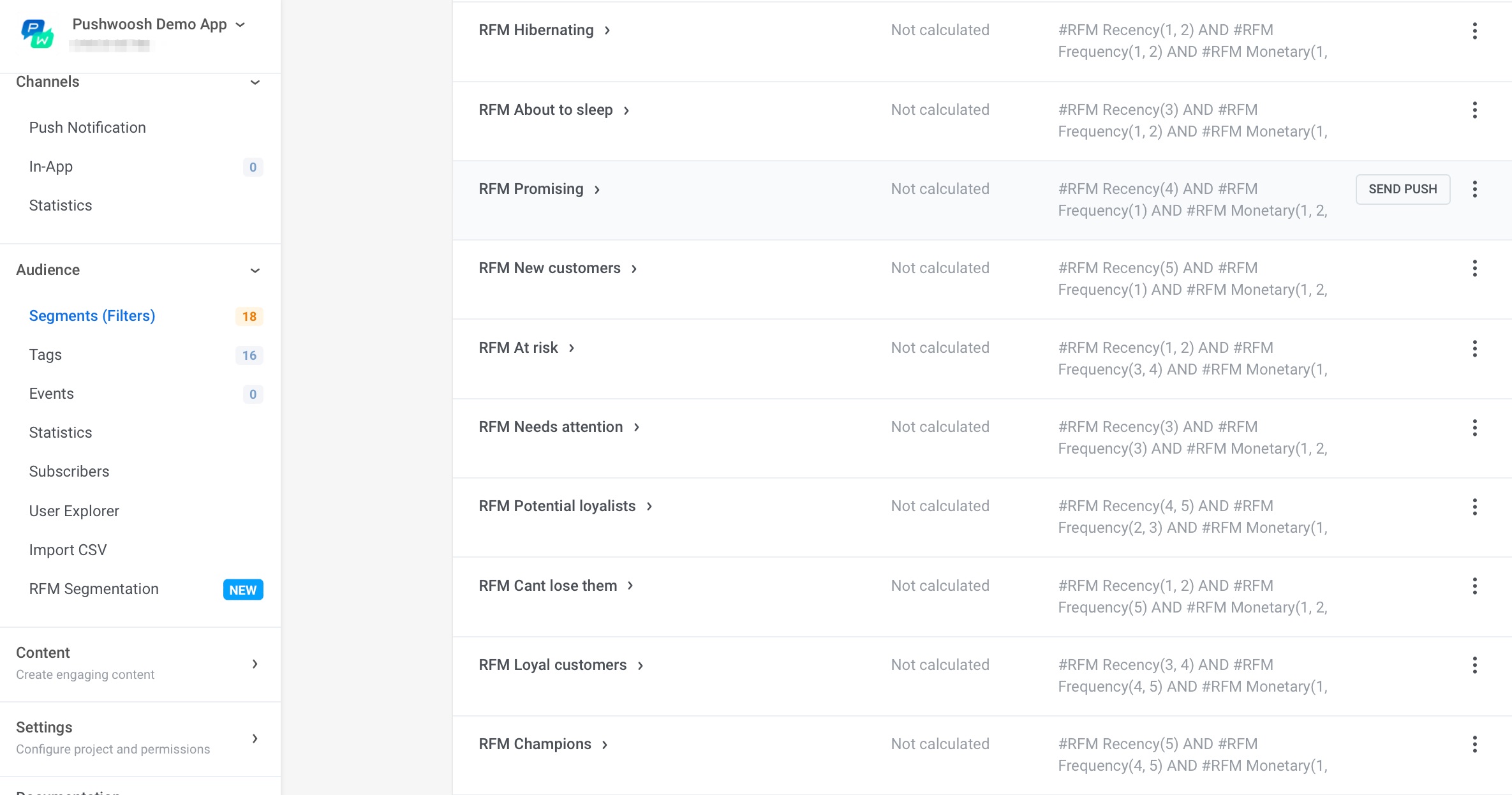
RFM Tags
Anchor link toFor each metric used for calculation, the corresponding tag is created in your account: PW Recency, PW Frequency, PW Monetary. You can use these tags to build your own segments in any combination.
